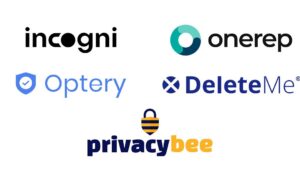Welcome to the dynamic realm of the digital frontier, where opportunities and risks coexist in equilibrium. As our lives become increasingly intertwined with technology, the online landscape has transformed into an expansive wilderness harboring threats that have the potential to disrupt, compromise, or dismantle our digital presence. Ranging from malevolent hackers to sophisticated cybercriminals, maneuvering through this precarious terrain necessitates unwavering vigilance and an enduring dedication to shielding ourselves from the perils of the virtual realm. Join us on this invigorating expedition as we delve into fresh frontiers of online threats and arm ourselves with vital knowledge and tools essential for conquering these challenges.
Introduction: Adapting to the Shifts in Online Security
In an era where the world is progressively migrating online, businesses must adapt their security protocols to remain at the forefront. The landscape of online security is in a constant state of flux, with novel threats surfacing daily. To safeguard the digital terrain, businesses must proactively navigate new horizons of online threats.
The initial stride in safeguarding the digital landscape involves comprehending the shifting panorama of online security. With the proliferation of novel devices and technologies, cybercriminals have more opportunities to exploit vulnerabilities. Businesses must remain well-informed about the latest trends in online security, enabling them to detect potential threats and safeguard their information.
Another pivotal facet of protecting the digital landscape involves fostering effective communication and collaboration among employees. Businesses need to cultivate a culture of cybersecurity awareness and educate employees about optimal practices for online safety. Employees should be adept at identifying phishing emails, recognizing warning signs in website URLs, and abstaining from clicking on links from unfamiliar sources. By nurturing a culture of cybersecurity awareness, businesses empower employees to contribute to the solution and counter online threats.
Businesses must invest in robust security solutions to safeguard their data. Tools such as firewalls, intrusion detection systems, and encryption play critical roles in securing the digital landscape. Additionally, businesses should contemplate incorporating multifactor authentication to add an extra layer of security for sensitive data. Through comprehensive security investments, businesses can fortify their data against even the most sophisticated attacks.
Categories of Cyber Threats
The digital landscape is in a perpetual state of evolution, giving rise to various forms of cyber threats. As technology advances, cybercriminals adapt their methods to gain access to personal information and wreak havoc on our lives.
Among the most prevalent forms of cyber threats is phishing. Phishing involves criminals using fraudulent emails or websites to deceive individuals into revealing personal information, such as passwords or credit card details. Perpetrators may masquerade as legitimate entities to gain trust; once armed with personal data, they can perpetrate identity theft or financial fraud.
Malware constitutes another cyber threat category. Malware refers to software expressly designed to disrupt or incapacitate computers. It can infiltrate computers unbeknownst to users and subsequently pilfer personal data, erase critical files, or even enable remote control of the affected system.
Hackers, yet another threat category, exploit their technical skills to gain unauthorized entry into computer systems or networks. Their motives may encompass data theft, malware implantation, or mere chaos creation.
These examples offer a glimpse into the manifold cyber threats present. While achieving complete immunity from potential risks is unfeasible, adopting preventive measures can curtail exposure and safeguard digital existence. Staying informed about current security threats, practicing sound cyber hygiene, and contemplating comprehensive security solutions are prudent steps.
Strategies for Mitigating Cyber Attacks
Numerous measures exist for individuals and businesses to counter cyber attacks, including:
- Regularly updating software and operating systems.
- Employing robust passwords and embracing two-factor authentication.
- Exercising caution regarding phishing scams and exclusively clicking on links from reliable sources.
- Installing and updating antivirus and anti-malware software.
- Regularly backing up vital data to avert loss during system failures or attacks.
- Utilizing a secure VPN while accessing public Wi-Fi networks.
- Exercising prudence in online disclosures to preempt identity theft or other criminal activities.
- Consistently monitoring credit reports to identify suspicious activities.
- Educating employees about cybersecurity best practices and conducting periodic training sessions.
- Contemplating cyber insurance to mitigate financial losses stemming from data breaches or attacks.
Incorporating Security Measures in the Workplace
Organizations must proactively adopt a comprehensive approach to security, encompassing the implementation of security measures in the workplace. Employees should be well-versed in security policies and procedures, receiving clear directives from management.
Diverse security measures can be deployed in the workplace, contingent on an organization’s specific needs. Common measures include:
- Restricting access to sensitive data and systems.
- Implementing user activity monitoring.
- Conducting routine security audits.
- Employing robust authentication methods.
- Encrypting data at rest and in transit.
- Furnishing secure remote access to corporate resources.
Furthermore, organizations should have an incident response plan in place. This involves designating responsible individuals for each step of the response process and outlining a communication strategy to keep stakeholders informed.
Lastly, organizations must cultivate a culture of security by prioritizing it and establishing policies and procedures that endorse secure conduct. A well-informed workforce is pivotal to ensuring awareness of risks and effective protective measures for both individuals and the organization.
Addressing Data Breaches
Data breaches have become increasingly prevalent, ensnaring organizations of all sizes in the clutches of cybercriminals. While any business can suffer from the loss of confidential data, small businesses are particularly susceptible due to their limited resources.
To mitigate the risk of data breaches, businesses can adopt several measures, including:
- Educating employees about cybersecurity best practices, including identifying phishing attempts.
- Implementing stringent password policies and enforcing regular password changes.
- Encrypting data both when it’s stored and when it’s transmitted.
- Regularly backing up critical data to ensure availability in emergencies.
- Vigilantly monitoring networks for suspicious activity and promptly addressing vulnerabilities.
- Acquiring cybersecurity insurance to offset costs associated with data breaches.
Although these measures cannot eradicate the risk of data breaches entirely, they can substantially decrease the likelihood of successful attacks and mitigate the potential damage.
Responding to an Attack
In the realm of online threats, proactive steps are pivotal for safeguarding oneself and one’s data. In the event of an attack, consider the following actions:
- Promptly change any compromised passwords.
- Notify financial institutions if you suspect your financial details are compromised.
- Involve law enforcement if identity theft or fraud is suspected.
- Enhance your device security by installing updates and security software.
- By taking these measures, you can minimize the repercussions of an online attack and bolster your online safety.
Conclusion: Adapting Online Practices for Enhanced Digital Security
From staying abreast of the latest digital threats to implementing prudent online security habits, myriad steps can be taken to safeguard the digital landscape. By adjusting online habits and comprehending the risks tied to internet usage, a safer digital environment can be fostered.
Vigilance in internet usage is crucial, as not all threats are apparent. Employing two-factor authentication, steering clear of public Wi-Fi networks, and exercising caution with emails and websites constitute only a fraction of the measures to protect personal data. Moreover, it’s imperative to keep software up to date to promptly apply security patches.



































